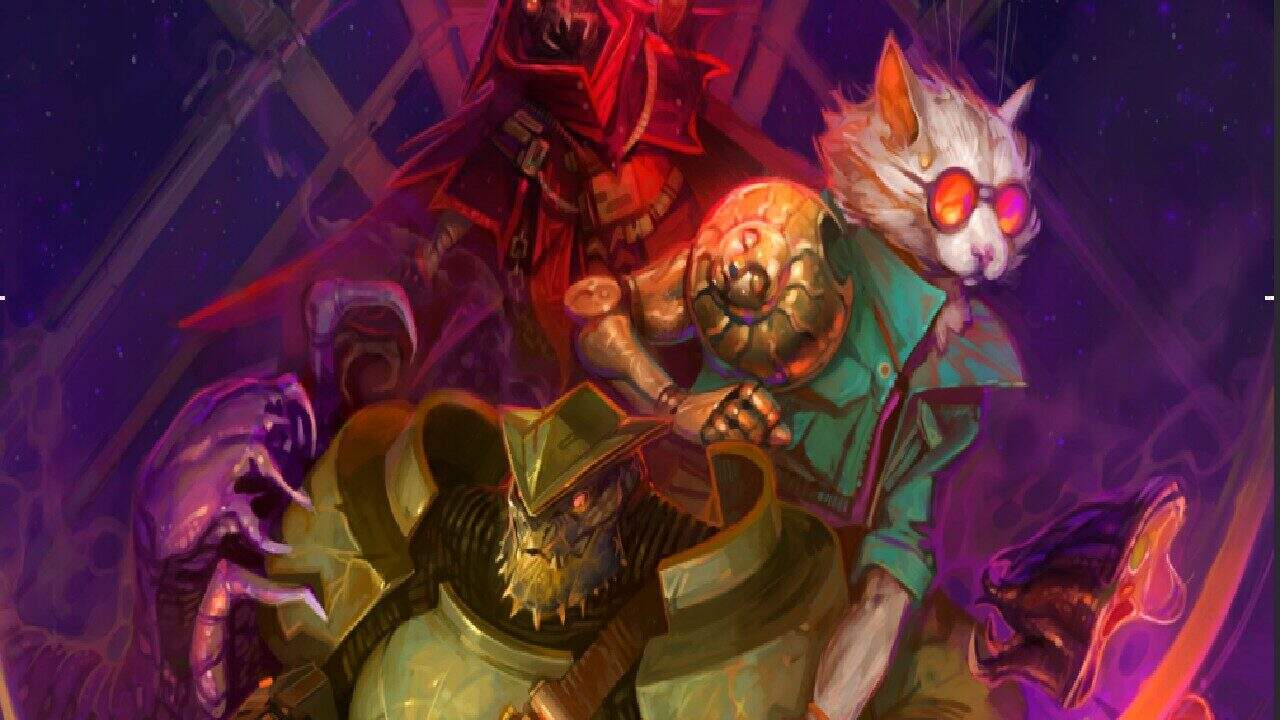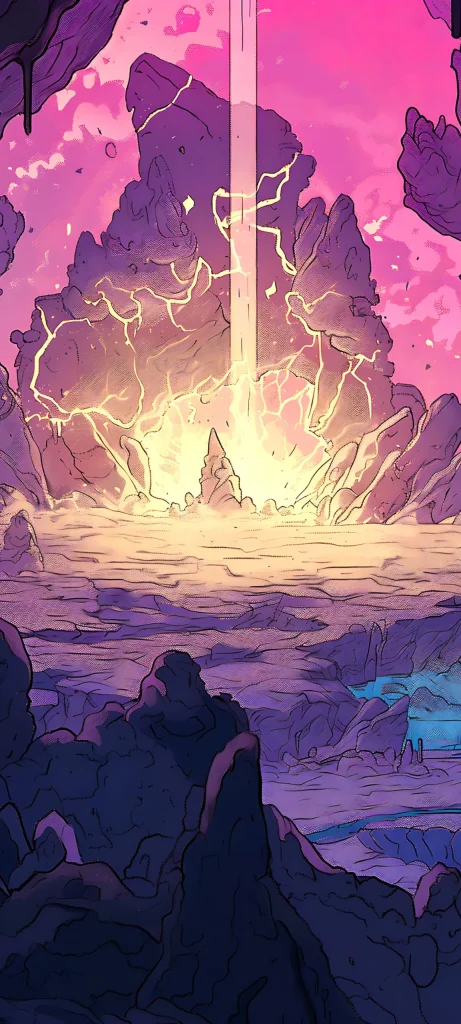Random encounter tables can be a sensitive subject. Some people think they are wonder tools; others believe they are terrible game design. Understanding their pros and cons opens up ways of making a game more exciting. Perhaps surprisingly, they can also make narratives feel more natural, increasing immersion at the table.
Criticism of Random Encounter Tables
There are two main complaints against encounter tables: they are boring and break immersion. The boring part mostly comes from repetition. Encounters have limited results; if the gamemaster (GM) is rolling often enough, repeats are inevitable. Lack of variety fails players with gamer brains; offering different problems with different difficulty levels is essential for these types of players. A GM rolling 1d4 wolves the first time should be fine. By the third or fourth encounter though, the fun is going out of the game.
The other complaint fails players who prefer grand narrative. They don’t see situations as challenges that need solving with optimisation; instead, situations are story beats that develop their character or the party’s narrative. The randomness can break immersion because that 1d4 wolves may have little to add to a character’s internal conflict. It’s an unwanted distraction, taking time and energy away from events more connected with the narrative’s flow.
Why Random Encounter Tables Can Hurt a Game
These are valid complaints, but they both have solutions that I will come to in a moment. First, however, it’s important to acknowledge some encounter tables are simply poor quality. There are three major failures to look for:
1) A list of encounters that shows only enemy types. No mention of what they are doing, and only combat encounters implied. This looks like 1D4 wolves, 2d4 zombies, one ghast, etc.
2) One encounter table for a variety of environments. 1D4 wolves might make sense in a forest; it does not in an underwater temple.
3) Any results of nothing happens. Every GM’s goal is to make every dice roll meaningful. These results are a waste of everyone’s time.
Any adventure module doing any of these things is failing the GM. It’s a boredom trap for new GMs; and for those that do see the problems early, it’s giving them extra work the designer should have already covered.
The Basics of Good Random Encounter Tables
A good table makes sure every result is giving something to the players, and making the life of the GM easier. Monsters should all be doing something. For example, those 1d4 of wolves are cleaning a wounded pup; the 2d4 zombies are on their hands and knees, clawing a large hole in the ground. GMs have a ready-made situation, and players have options on how to deal with the encounter. Combat is a choice, not the default.
There should be a different table for every environment. These should make each area feel different. For instance, a forest should have heavy cover, remoteness, and elevation; a thief’s children are practising their stalking skills on the party; a hag is crying, trapped in a fairy ring; bandits are exploring a ruined settlement in the canopy of the trees.
Things People Get Wrong about Random Encounter Tables
The third failure, “nothing happens,” highlights a common mistake among designers and GMs. Besides fans of gaslighting, there’s no worthwhile tension in a die roll if players don’t know all the outcomes. Roll tables are rarely on show, so players never really know how lucky they are. Rolling 1d4 wolves isn’t as interesting as everyone knowing an ancient green dragon had also been a potential result.
From the player perspective, the GM makes a roll, often hidden behind a GM screen; the GM checks a table the player cannot see; then, they tell the group what happens. It’s no surprise players often think their GM is actually choosing the results. In fact, some GMs do; as an aside, a quantum ogre can sneak into the game here. But genuine or not, this process forgets tension comes from knowledge, not mystery.
Give Information Freely
Think of a tense film, TV show, or book. The tension comes from the audience knowing the stakes, even if the characters don’t. Absolute mystery gives no clue how to feel. The “when” and the “how” can be mysterious; but a good story lets the audience know exactly what is at risk. For instance, The Ring—or Ringu, the original Japanese version—tells the audience something terrible comes out of a well. Now, every time they see the well, the audience wonder if this is the moment something crawls out. Of course, each time it doesn’t, the expectation increases; the tension keeps on rising, until the inevitable.
In a random encounter table, “nothing happens” is the absolute worst result because there is no inevitable. The Ring’s horror genre guarantees the audience something terrible will come out of that well. A random table with “nothing happens” has no guarantee. In the end, the GM has stopped the game’s flow for no payoff; the players have nothing new to work with. Every result should give the players new information or change the action in some obvious way.
For instance, a party are in a forest where a dragon lives; instead of rolling “nothing happens,” the GM takes the chance for some environmental storytelling. Now, the result is hearing a dragon’s kill-roar in the distance; finding the body of a past kill—a chance to foreshadow its attacks; or, finding a clearing with large glyphs clawed into the ground.
If a die roll doesn’t add or change anything, it needs removing or reinterpreting.
Limitations of Random Encounter Tables
Encounter tables are just another tool in the GM’s toolkit. They’re just there to provide inspiration. That’s why a lot of GM advice recommends picking the result that sounds the coolest or fits the moment best. The GM knows what’s best for the session in the moment far better than any encounter table designer. As long as the table is giving the GM inspiration, and giving players a variety of challenges with a variety of difficulty levels, it’s doing its job.
In fact, how the GM reaches the result doesn’t really matter—I’ll always advise being open with players, though. GMs that want to use dice can also roll two or three times and pick the most interesting; alternatively, combining results can make for a larger, more complex encounter. It really doesn’t matter so long as the game keeps flowing and everyone is having fun. Random encounter tables will never replace a GM’s prep; neither should they ever be in charge of what happens. The GM should always be in control.
Making Random Encounter Tables Work for the Group
So, recall the two main complaints of random encounter tables: they can be repetitive and break immersion. Let’s fix that.
First, before a session, make sure the tables are of good quality. That means:
1) All creatures are busy doing activity; all environmental encounters give useful resources or information that foreshadows. For groups that love narrative, include results linked to the adventure’s themes, overall story, or a character’s sub-plot.
2) All environments have their own table. Challenges should highlight the nature of the environment. Keep them varied in type and difficulty.
3) Replace any “nothing happens.”
An extra step for GMs expecting to use the table a lot during a session: write down some extra results; keep them in reserve.
Then, during the game, remove encounters from the table as they get used. This prevents repeats. After the game, look at the completed encounters and think how these could develop. Create new encounters from these developments. Finally, rebuild the table with these new results. This helps immersion and the narrative.
For instance, in session one, the party kill four wolves; in the second session, they may find the pack’s now starving pups. As another example, the group chooses to free the hag trapped in a fairy ring in session one; she finds them later wanting to repay her debt; she may give them important information or show them an entrance into the fairy kingdom, their choice.
Now, random encounter tables don’t get in the way of a great session; now, they help the GM like any good tool should.
Consider Giving Players Power
For one final tip, consider not just letting the players roll on the table, but showing it to them. Players rolling without knowledge of the possibilities is a waste of time; however, giving them knowledge will increase the emotions at play—be it excitement, shock, nervousness, or just good banter.
For the really brave, there’s even the option to let the players pick!
Groups with a preference for the gamer side may prefer open challenges and escape room problems. If this is where the fun is, encourage it. A party adventuring in the desert might face the Hourglass Vault, the Tomb of the Moon, a sand kraken, or bulettes in a sandstorm. Groups that prefer more narrative and intrigue will appreciate more story-like titles. A party exploring a city might find A Whisper from the Executioner, A Shambler at the Bridge, or A Lord’s Corruption.
Players at the table should be able to look at the choices and have some idea of what could be coming. Don’t be too mysterious; it defeats the point of showing the table. If players have any questions, give them answers. Too much information is better than too little; despite what people might think, spoilers increase enjoyment!
Random Encounter Tables Can Work for Any Group
There is valid criticism of certain types of random encounter tables. However, I hope this has highlighted how useful they can be as a tool for GMs. Anything that makes running a game easier is a very good thing in my opinion. Far from damaging the experience at the table, they can boost a gaming session to another level. Give them a try!
Good luck!




![pexels-karatara-278139-931317 A photo of the Paris Tuileries Garden Facepalm statue. Illustrates [alt text].](https://www.michaelghelfistudios.com/wp-content/uploads/2025/02/pexels-karatara-278139-931317.webp)
![pexels-ds-stories-6005376 A photo of block letters that spell "everything." Illustrates [alt text].](https://www.michaelghelfistudios.com/wp-content/uploads/2025/02/pexels-ds-stories-6005376.webp)
![NoEntry.pixabay.panel-2091780_1280 A street sign showing a hand grabbing a rectangle. Illustrates [alt text].](https://www.michaelghelfistudios.com/wp-content/uploads/2025/01/NoEntry.pixabay.panel-2091780_1280.webp)
![pexels-shvets-production-7203722 A photo of the word "idea" coming out of a box labeled "brain". Illustrates [alt text].](https://www.michaelghelfistudios.com/wp-content/uploads/2025/02/pexels-shvets-production-7203722.webp)
![dog-838281_640 A close up photo of a dog staring at the camera. Illustrates [alt text].](https://www.michaelghelfistudios.com/wp-content/uploads/2025/02/dog-838281_640.webp)
![BrainDrawing.pixabay.brain-7803654_1280 A composite image of a hand drawing stairs for a brain, or the mind, to climb. Illustrates [alt text].](https://www.michaelghelfistudios.com/wp-content/uploads/2025/01/BrainDrawing.pixabay.brain-7803654_1280.webp)



